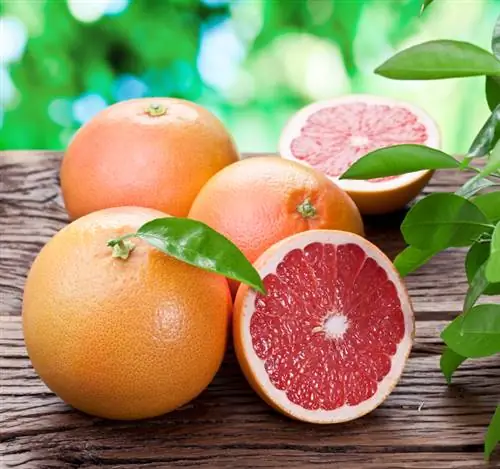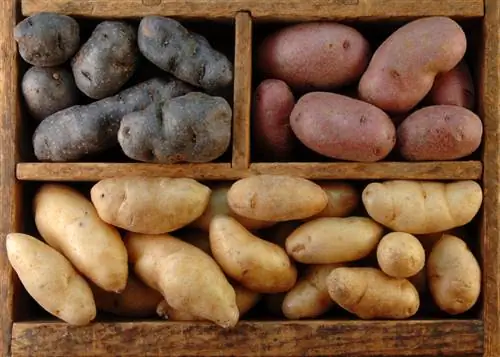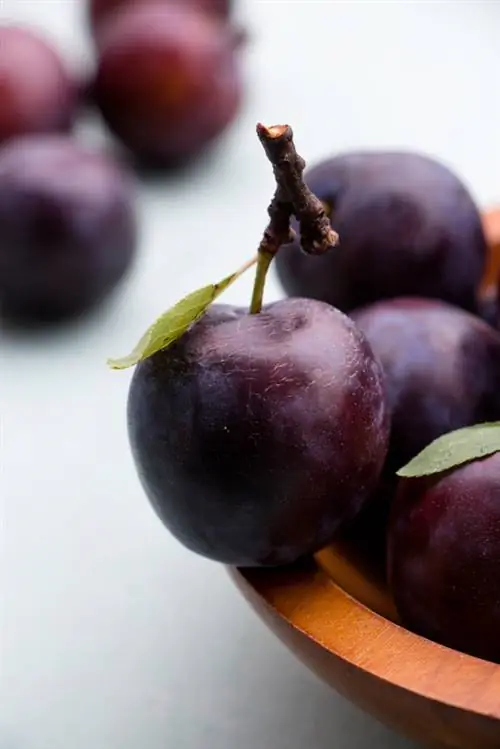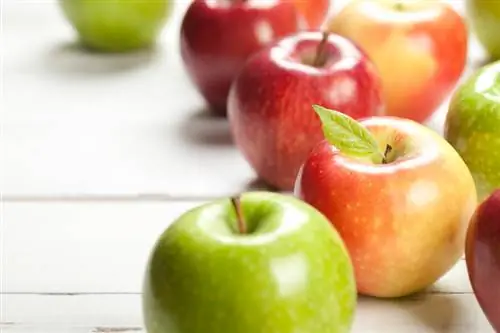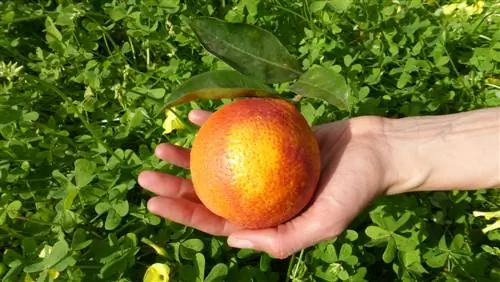- Author admin [email protected].
- Public 2023-12-16 16:46.
- Last modified 2025-01-23 11:20.
Red-fleshed grapefruits and blood oranges not only look very similar at first glance, the fruits are also similar in terms of taste. This is hardly surprising, since the grapefruit was once the result of a cross between a grapefruit and an orange. Nevertheless, they are variations of different types of citrus. The intense red color of red grapefruits only develops when temperatures are high in summer.

What is the difference between blood oranges and red-fleshed grapefruits?
Red-fleshed grapefruits and blood oranges look similar and have similar flavors, but are variations of different types of citrus. The red color of grapefruits is caused by high summer temperatures, while the color of blood oranges is caused by cold autumn temperatures.
Red-fleshed grapefruits
Basically, grapefruits with pink or even red flesh are significantly milder and sweeter than the varieties with light flesh. The darker colored a grapefruit is, the sweeter it tastes. Probably the red-fleshed grapefruit is the “Star Ruby” variety, which was selected in 1959 from seeds of the “Hudson” variety. The Star Ruby grapefruit not only has very tasty fruits, but is also an attractive container plant with its wide, dark green and compact crown. It is also relatively insensitive to cold. However, it only develops its bright red flesh at particularly high summer temperatures.
Other red-fleshed varieties
The red-fleshed grapefruit varieties listed below differ in the degree of flesh and peel coloring as well as in their more or less intense taste.
- Pink Marsh (old variety with light pink flesh and few to no seeds)
- Ruby Red (the oldest variety with bright pink flesh)
- Ray Ruby (much darker and therefore sweeter than Ruby Red)
- Rio Red (one of the most commercially grown varieties)
- Burgundy (deep red flesh, seedless)
- Henderson (commonly grown in Texas along with Rio Red and Ruby Red)
- Flame (one of the most commercially grown varieties))
Aromatic Blood Oranges
Blood oranges are oranges (Citrus aurantium) with red flesh. These fruits taste very different from normal juice oranges, as they have a distinct, fruity blackberry aroma when fully ripe. In contrast to red-fleshed grapefruits, whose color develops through heat, the red flesh color of blood oranges only develops in cold autumn temperatures.
Blood orange varieties
“Moro” is the most strongly pigmented blood orange in the flesh, which is often so intensely colored that the flesh appears almost black-brown. The shape of the fruit is round and the peel, in contrast to the flesh, is only slightly red in color. Other varieties are:
- Sanguinelli (intense peel color)
- Sanguinello (half blood orange with lighter flesh)
- Tarocco (fruit is often larger than other blood oranges, seedless)
By the way, the blood orange variety “Tarocco” probably has the highest vitamin C concentration of all citrus fruits.
Tips & Tricks
The so-called “New Zealand grapefruit” has straw-colored, mildly aromatic flesh. Since it needs less heat than a normal grapefruit and ripens early (December), it is more suitable as a summer outdoor container plant.

